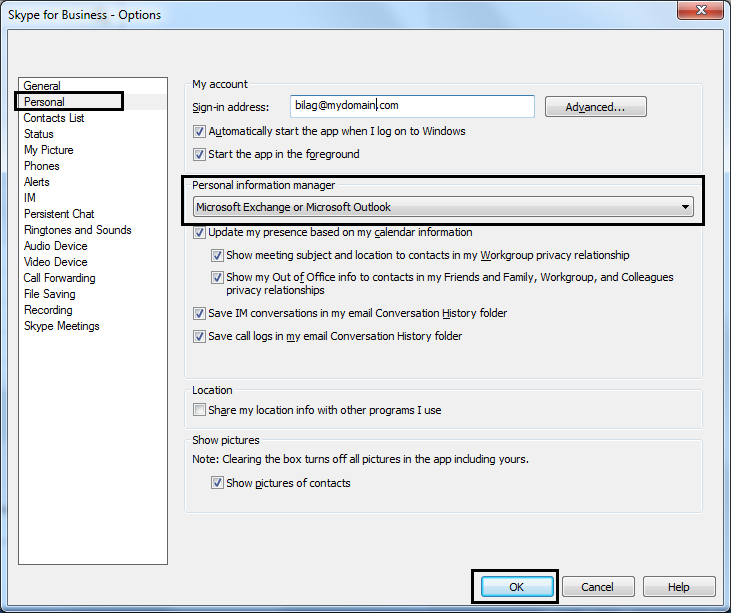
- #Skype for business mac no network connection free
- #Skype for business mac no network connection windows
The Skype business client then sends the signal to the Skype for Business server, which in turns signals the PBX to open the user's line and make the call via a desk phone.

From the Skype client, users select the person they want to call and simply initiate the call from within the client. Organizations with PBX desk phones can use their phones to place calls to other Skype contacts. Functions such as Quick Actions buttons have migrated from Lync to the new Skype client, allowing users to access call, instant message, video conference functions and more, with just a few clicks. The recent facelift Microsoft gave to its Skype client has made the interface easier to work with and less cluttered. Contacts, presence status, buttons and icons are the same as the consumer Skype application.
#Skype for business mac no network connection free
The Microsoft Skype for Business Server client has a similar interface to the free consumer-based Skype. Capitalizing on consumer Skype, touting ease of use This is one of the big advantages with Microsoft-based solutions - IT departments will find a healthy amount of information that will help them deal with pretty much any problem they encounter. Microsoft provides a plethora of documentation on different deployment models supported and technical requirements. Back-end servers are SQL servers providing database services to front-end servers. The front-end servers handle user authentication and registration, presence information, IM, conferencing and more.

Organizations can have a pool of front-end servers and back-end servers. In larger-scale deployments, the Skype business server splits its roles into separate servers, creating pools of servers for specific tasks.

If a server fails, other servers can provide uninterrupted service to users. In this redundant model, users are balanced between the servers. Redundancy is covered with the installation of multiple on-site Skype for Business servers in an active-active configuration.

If your organization uses Skype, users are likely to feel comfortable with Skype for Business and the learning curve will be minimized. Additionally, the deployment would need one Edge Server to give users Skype for Business Server functionality outside the office for mobile or remote users, while at the same time allowing participation during meetings, IM and other communications with outside users.
#Skype for business mac no network connection windows
In its simplest deployment, a Skype business solution would require one Skype for Business Server installed on a Windows 2012 R2 64-bit server that would handle user registration, databases, call routing, instant messaging, presence services and more for internal users. Setting up servers for internal and external tasks The Microsoft Skype for Business Server can support a range of business sizes, including small enterprises with up to 4,000 users at their central site, medium enterprises with up to 80,000 users with multiple remote sites, and large organizations with more than 100,000 users spread across multiple remote sites.ĭepending on the size of the enterprise and number of users at headquarters and remote sites, multiple servers are required to ensure proper load balancing and high availability of services. With a database of thousands of installations, Skype for Business is setting a completely new standard of UC services on a global scale.


 0 kommentar(er)
0 kommentar(er)
